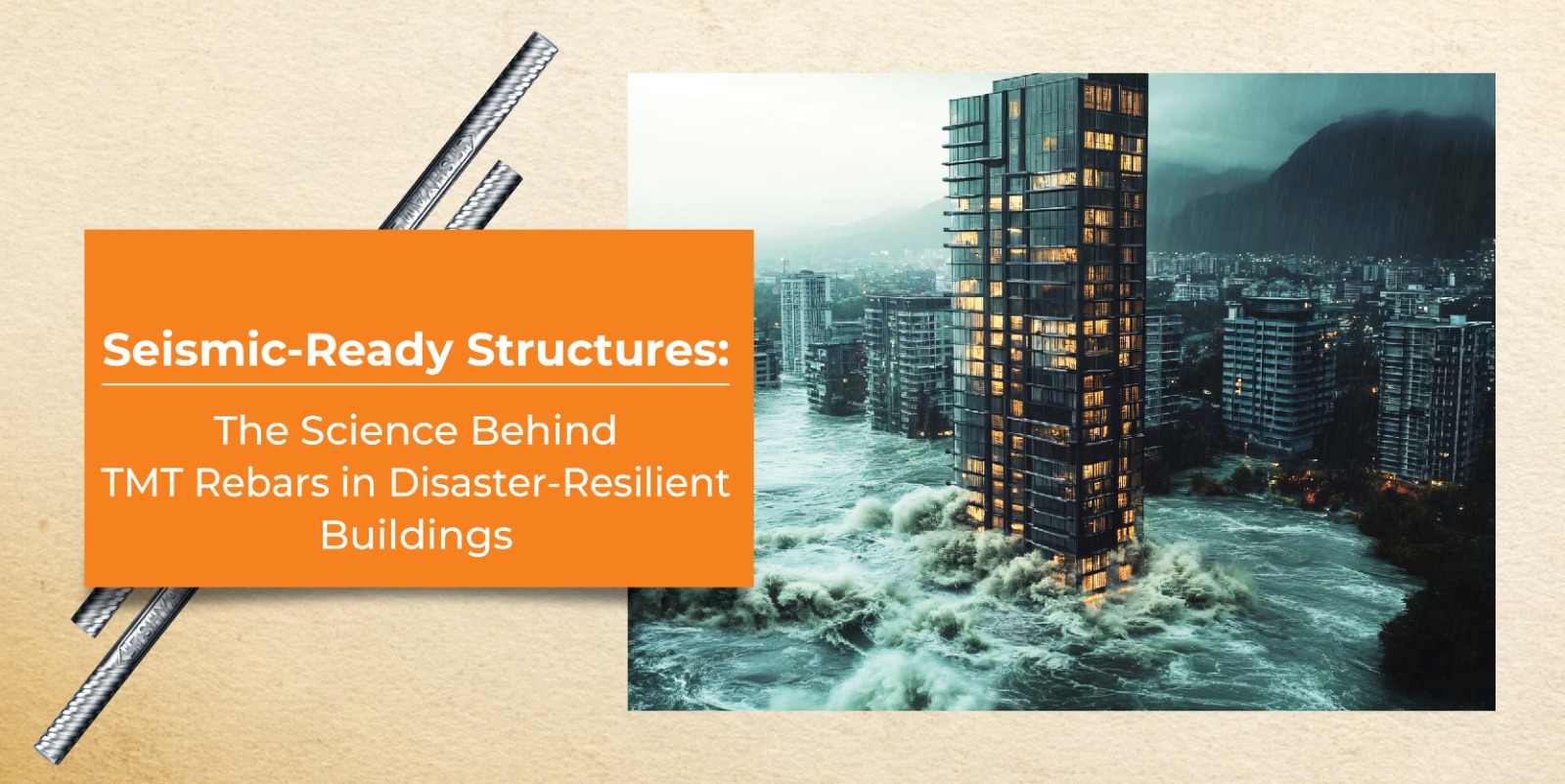Seismic-Ready Structures: The Science Behind TMT Rebars in Disaster-Resilient Buildings
Walk through areas in India where earthquakes happen, and you’ll notice something important: strong buildings are built to face big challenges. But what makes a building able to stand during an earthquake? The answer often comes down to one key material – TMT Rebars.
Why Earthquake Safety Needs More Than Just Strength
During an earthquake, buildings need to be more than just strong. They must be able to bend and move a little, so they don’t crack or fall apart. Old building methods sometimes used stiff materials that could break when the ground shakes. That’s why new science and smart choices matter.
TMT Rebars are special steel rods that help buildings survive earthquakes. They’re made in a way that gives them a tough outside to hold up weight and a softer inside that lets them flex and bend. This means they help buildings stretch instead of snapping when disaster strikes.
How TMT Rebars Work
Making TMT Rebars is a special process. First, hot steel rods are cooled quickly on the outside but slowly on the inside. This makes them useful in two ways:
- Their strong outer layer handles heavy loads.
- Their flexible inner layer allows the steel to bend so buildings can move a bit during an earthquake.
This is important because if buildings are too stiff, they can break when the ground moves. TMT Rebars help buildings absorb shocks and stand firmly on the ground.
Stricter Rules, Safer Homes
After some big earthquakes in India and nearby countries, safety rules changed. Now, many new buildings – like homes, schools, and bridges – must use TMT bars that meet certain standards.
Engineers choose TMT Rebars after testing how well they bend, stretch, and hold up over time. These tests matter because they make sure our homes and offices are safer when earthquakes happen.
Putting TMT Rebars to Work
When building something strong, many things matter – like sturdy walls, well-planned supports, and special pads under buildings. But TMT Rebars run through all the beams and columns, holding everything together from top to bottom.
On-site, builders like using TMT Rebars because they are easy to shape and strong enough for tough conditions. Their bends don’t cause breaks, so buildings stand tall through extreme weather conditions.
Mixing Old Ideas with New Science
India has a long history of building earthquake-safe structures. From wooden houses in the mountains to stone temples with clever locks, traditional builders were smart about safety. Today’s buildings mix those traditional ideas with new materials. Thanks to both tradition and innovation, TMT Rebars are helping us protect communities better than ever.
Thinking about Tomorrow
Earthquake-safe buildings are also good for the environment. TMT Rebars last a long time and can be recycled, so they help save resources. We need less material over time because buildings made with TMT Rebars do not need much repair even after earthquakes.
The real strength comes from joining the best of tradition with new technologies – making sure designs and materials match the needs of each place.
Staying Safe and Strong
We can’t stop earthquakes, but we can make smart choices about how we build structures. Thanks to modern TMT Rebars and better building rules, more Indian buildings are ready to handle big shakes.
At Shyam Steel, we’re proud to make TMT bars that help keep families, schools, and cities safe. Disaster-ready buildings are not just about steel and concrete – they’re about protecting lives and giving hope for a safer future.

